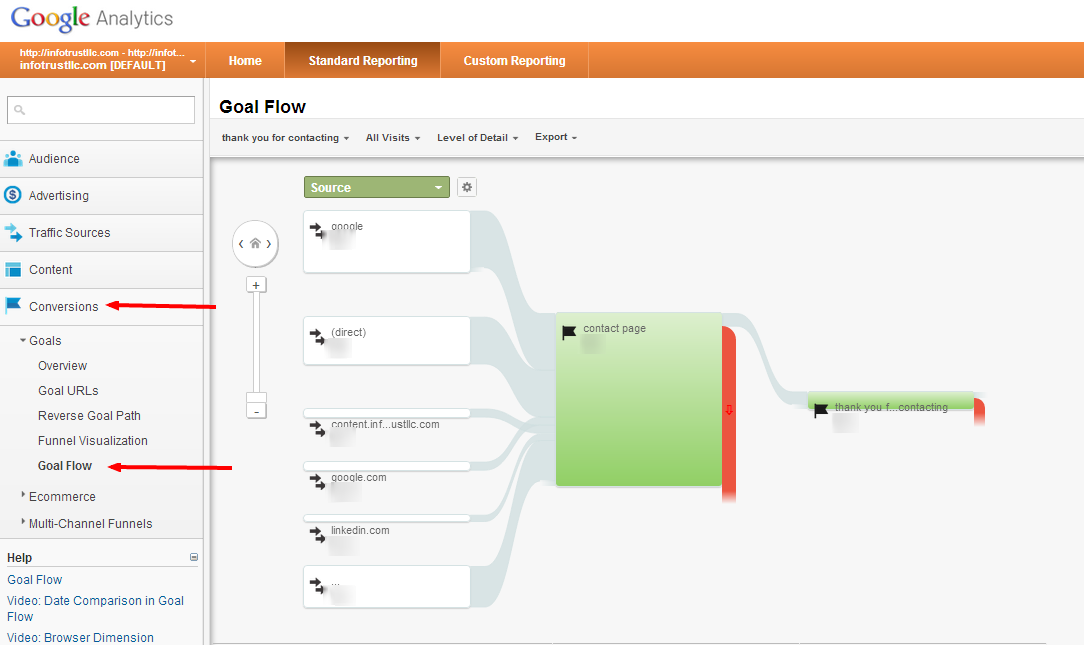Discover the Limitations of Google Analytics Goals: Revealing the Information Types That Remain Untrackable
As services increasingly count on data-driven decision-making, understanding the constraints of tools like Google Analytics ends up being paramount. While Google Analytics Goals offer important understandings into individual communications, there exist data kinds that thwart tracking, presenting challenges to an extensive understanding of customer habits.
Insufficient Individual Journey Tracking
Incomplete user journey tracking within Google Analytics can hinder the capacity to accurately examine customer habits. When the individual trip is not completely tracked, there are gaps in the data that stop a thorough understanding of how users interact with a site. This lack of insight can lead to missed out on possibilities for optimization and renovations to the individual experience.
One typical problem with incomplete individual trip monitoring is the failure to see the full course that customers take in the past completing a goal or leaving the website. Without this information, it is testing to identify where individuals might be experiencing obstacles or rubbing factors that stop them from converting. Furthermore, insufficient monitoring can obscure the effect of specific marketing initiatives or web site adjustments on customer habits.
To address this limitation, it is important to establish correct tracking devices within Google Analytics to catch the entire customer journey. This might include establishing event monitoring, goal funnels, or making use of tools like Google Tag Supervisor to ensure that no crucial interactions go unrecorded. By gaining a comprehensive view of the user journey, web site proprietors can make even more informed decisions to enhance user interaction and drive conversions.
Attribution Obstacles
Navigating with attribution difficulties in Google Analytics needs a detailed understanding of how different touchpoints contribute to the total conversion procedure. Acknowledgment difficulties arise from the complexity of modern-day client trips, where customers engage with several networks before converting.
One typical attribution difficulty is the trouble in connecting conversions to the appropriate source, specifically in situations where users communicate with numerous channels before transforming. In addition, cross-device tracking postures one more attribution difficulty, as customers typically switch in between gadgets throughout their trip, making it testing to track their interactions seamlessly.
Offline Conversions
Given the challenges associated with associating conversions precisely in online networks, the measurement of offline conversions presents a substantial opportunity for online marketers looking for an extra comprehensive understanding of their clients' trip. Offline conversions refer to activities that customers take in the physical world, such as making acquisitions in brick-and-mortar shops or over the phone, attending occasions, or involving with published materials - what data is google analytics goals unable to track. These conversions are vital for businesses that run both online and offline, as they offer beneficial insights into the effectiveness of marketing projects throughout various touchpoints
Tracking offline conversions generally see this site posed a substantial obstacle for marketing professionals, as it was challenging to link these activities back to certain online interactions properly. With innovations in modern technology, such as the combination of CRM systems, unique identifiers, and promo code codes, companies can now connect the gap in between online and offline information to get a much more alternative view of customer actions. By properly gauging offline conversions, marketing professionals can enhance their methods, assign resources more successfully, and eventually enhance the overall consumer experience.
Cross-Device Monitoring
Cross-device tracking plays a crucial duty in comprehending the interconnected nature of consumers' electronic communications throughout numerous gadgets. In today's omnichannel globe, where customers perfectly switch between tablet computers, desktop computers, and smartphones, tracking their behavior across these gadgets is necessary for marketing experts to gain a detailed sight of their customer trip.

Moreover, personal privacy problems and guidelines such as GDPR and CCPA have additionally difficult cross-device tracking. With users requiring more control over their information and increased constraints on monitoring innovations, online marketers need to locate privacy-compliant and ingenious methods to link customer interactions throughout tools.
Dynamic Web Content Engagement
Recognizing individual involvement with vibrant content is pivotal in maximizing digital advertising and marketing strategies for enhanced audience interaction. Dynamic web content refers to website components that transform based on customer habits, choices, or other factors, offering a tailored experience. However, view tracking individual communications with dynamic content postures challenges for traditional analytics devices like Google Analytics.
While Google Analytics can track basic interactions like clicks and web page views, it may battle to capture even more nuanced involvements within vibrant material. what data is google analytics goals unable to track. Metrics such as time spent on certain vibrant components, float actions, or interactions within pop-ups are typically not conveniently measurable making use of standard monitoring techniques. This limitation hinders marketing professionals' capability to totally grasp just how individuals are involving with vibrant material and customize their techniques as necessary

Verdict
Finally, Google Analytics objectives have limitations in tracking insufficient user journeys, associating conversions properly, capturing offline conversions, tracking cross-device interactions, and gauging vibrant material involvement. These constraints highlight the relevance of exploring additional tracking approaches and devices to acquire an extra comprehensive understanding of individual behavior and conversions beyond what Google Analytics can offer.
While Google Analytics Goals offer beneficial understandings right into customer communications, there exist data types that avoid monitoring, presenting difficulties to a detailed understanding of individual actions.Insufficient customer trip monitoring within Google Analytics can hinder the capacity to precisely analyze individual actions. Click This Link When the user trip is not totally tracked, there are voids in the data that stop a thorough understanding of how individuals communicate with a web site.One common issue with incomplete user journey monitoring is the lack of ability to see the full path that customers take previously completing a goal or leaving the website. By getting a comprehensive view of the individual trip, website owners can make more educated decisions to boost user engagement and drive conversions.